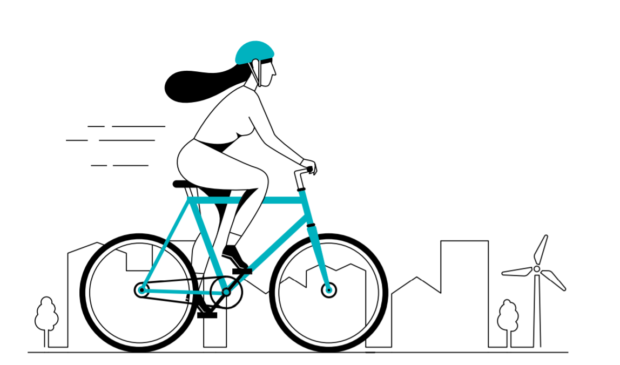Europe offers a road map for moving from cars to bikes and scooters
Tuesday, March 12, 2019 by
Chad Swiatecki As Austin continues to grapple with managing the growing commercial fleets of electric scooters available on its streets, other questions about urban mobility multiplied at this year’s South by Southwest Conference.
In a pair of short talks on March 9 from European-based transit proponents, a move from single-passenger vehicles to bicycles and the increasingly ubiquitous scooter was the burning issue of the day, with answers that show there’s no fast or easy solution.
In a study of public behavior in Berlin and San Diego – cities of comparable populations yet with wildly different transportation behaviors – international consultant Dirk O. Evenson found that adoption of non-vehicular transit can’t be driven by policy or spending billions of dollars to change transportation infrastructure, as he explained at the panel “How to Make More People Ride Bikes in Cities.”
Instead, his research found that human factors such as curiosity about alternative transit modes and recommendations from others were by far the cause of the largest changes in transit behavior.
“It’s not the need in terms of policy that tends to drive our actions,” he said.
“The moment of change comes from seeing other riders on the street, and the curiosity that comes from seeing it. Novelty is a great reason to try something, but novelties sometimes wear off. More than rational reasons, the factor that drove retention was simply that it was more fun and that it was easy and hassle-free. These two factors are more prominent than other reasons like speed and cost. Emotional factors are overlooked and infrastructure won’t get you the results you need,” Evenson said.
Evenson’s research, which was focused only on those who had changed from vehicles to bikes or scooters, also found that those options tended to have high rates of retention, with nearly 50 percent of respondents saying they use them at least once a week, and 54 percent using them somewhat less regularly. Those numbers were identical in both cities, suggesting cultural factors fall away for adopters.
Evenson’s message was that cities can’t expect merely to spend their way to changing behavior.
“What we see in our work with our partners and our clients is they focus on laws and cement and paint and infrastructure, and while these are necessary, they don’t actually lead to people doing what you need them to do and what people say they would like to do,” he said. “What makes people do things is more than law, infrastructure and paint. To get to the actions you want takes more than just having a safe bike lane available.”
On the issue of safety for emerging personal transportation, speaker Carlos Bhola, co-founder of the Flash e-scooter company that is currently active in Europe, said the practice of U.S. scooter companies charging per minute of use leads to reckless behavior. Bhola pointed out at the “Cities: How to Keep Them Moving” panel that scooter riders in Austin had racked up nearly 250 serious accidents in the previous 60 days.
“If you start thinking in terms of time, when your need is (covering) space you engage in pretty warped behavioral patterns,” he said. “If you’re being billed by time, what is the natural human instinct? It’s to hurry up, because no one wants to pay more than they should. Hurrying up on a device leads to some seriously irresponsible behavior and serious accidents. You have adopted a pricing behavior that is a moral and physical hazard.”
With the average driver spending 97 hours per year stuck in traffic and more than half of all car trips lasting less than three miles and including only one person, Bhola said Americans are habitually using a mode of transportation and road infrastructure designed in opposition to the way most people travel.
“If we removed all hydrocarbon vehicles from planet Earth, the average human life span would increase by 4.1 years,” he said. “If that’s not enough motivation to do something different, then there’s something wrong with us.”
Illustration via evenson.de.
The Austin Monitor’s work is made possible by donations from the community. Though our reporting covers donors from time to time, we are careful to keep business and editorial efforts separate while maintaining transparency. A complete list of donors is available here, and our code of ethics is explained here.
You're a community leader
And we’re honored you look to us for serious, in-depth news. You know a strong community needs local and dedicated watchdog reporting. We’re here for you and that won’t change. Now will you take the powerful next step and support our nonprofit news organization?











